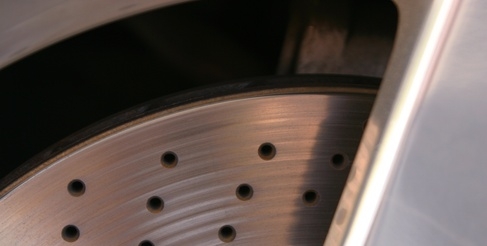
Every time you get in the car, you trust your life to the quality of your brakes. Every time you brake, heat and gas builds up between the rotors and the pads. This heat slows down your braking and shortens the lifespan of your brakes. Cross-drilled and slotted brake rotors are two types of rotors designed to handle this problem. Cross-drilled rotors have ventilation holes drilled through them, and slotted rotors have machined grooves that provide a channel for air, heat and gas.
When you hit the brakes, contact between the brake rotors and pads produces a lot of heat. Both drilled and slotted rotors help dissipate heat by allowing air to flow around the rotors and pads. Cooler brakes mean quicker stops and a longer lifespan for both your brake pads and rotors.
Heat isn't the only thing that builds up between your brake rotors and pads. The material that gets burned off your brake pads becomes a gas, which in solid rotors gets trapped between the rotors and pads and loosens the grip of the pads. Slotted and drilled rotors let the gas escape, helping further cool the brakes and keep firm contact between the pads and rotors. This helps prevent your rotors from warping over time and reduces "fade," the decrease in performance of your brake rotors as they age.
The holes in a cross-drilled brake rotor give water a place to escape, increasing brake performance when you're driving in the rain.
Because of the extra machining required, drilled and slotted brake rotors are generally more expensive than solid rotors. Also, slotted rotors may warp or crack over time. This is because the hot gas from the pads gets trapped in the slots. As the rotor wears the slots shrink, creating less space for the gas. Cross-drilled rotors, on the other hand, are able to properly vent gas throughout their lifespan and should not warp.